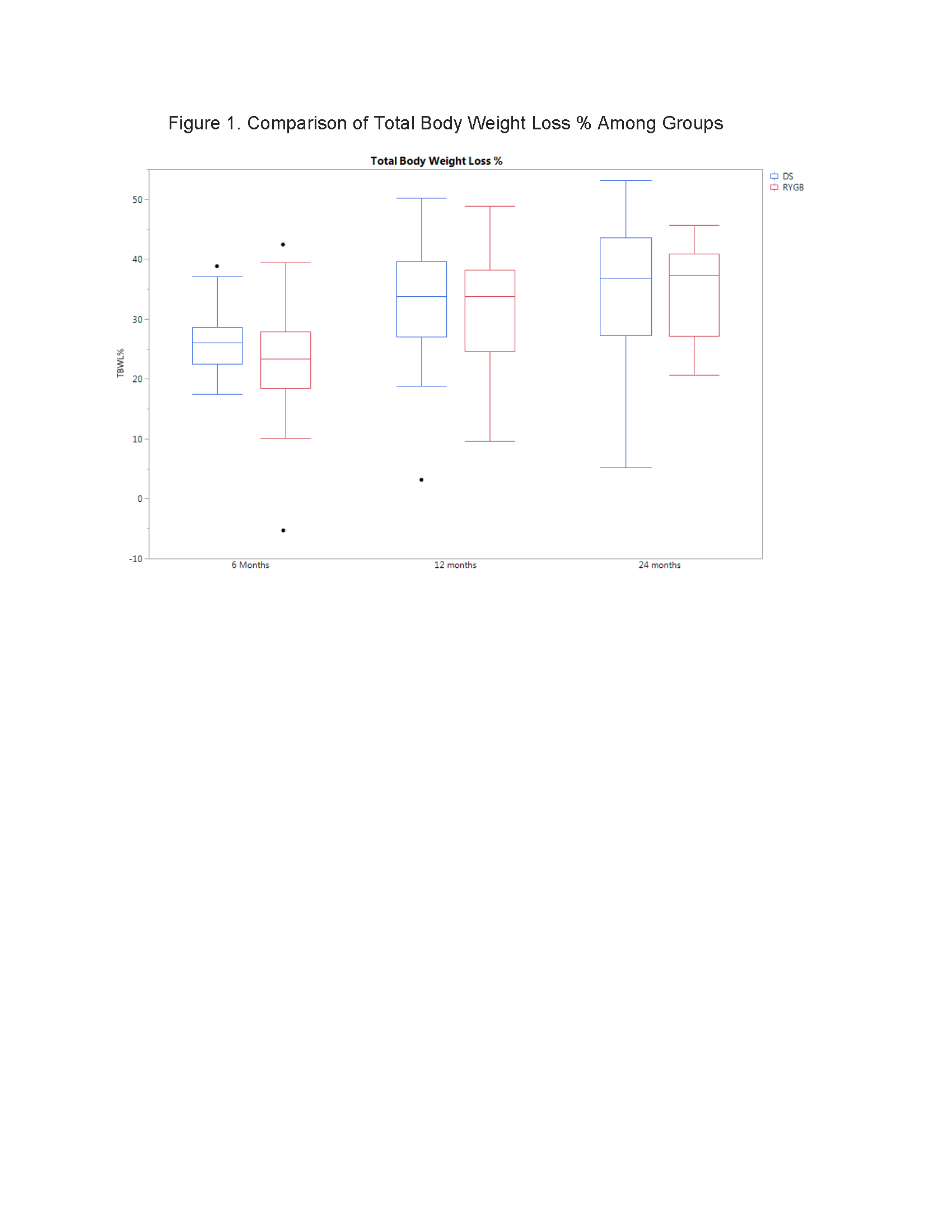NUTRITIONAL DEFICIENCIES AND OUTCOMES AFTER DUODENAL SWITCH WITH A MODERATE COMMON CHANNEL LENGTH AND STANDARD ROUX-EN-Y GASTRIC BYPASS: DOES ONE POSE MORE RISK?
Alaa Sada*1, Rolando D. Calderon-Rojas1, Thomas Szabo Yamashita1, Wendy S. Reidt1, Amy E. Glasgow2, Michael L. Kendrick1, Elizabeth B. Habermann2, Travis J. McKenzie1, Todd A. Kellogg1
1Surgery, Mayo Clinic, Rochester, MN; 2Surgical Outcomes Program, Robert D And Patricia E Kern Center For The Science Of Health Care Delivery, Mayo Clinic, Rochester, MN
Introduction
Despite the superior effectiveness of the duodenal switch (DS) at reducing weight, it is infrequently performed in part due to a perceived increased risk of postoperative nutritional deficiencies and the need for revision. We compared postoperative nutritional deficiencies and outcomes between DS with a moderate common channel length and standard proximal Roux-en-Y gastric bypass (RYGB).
Methods
We conducted a retrospective cohort review of 61 matched pairs of patients who underwent laparoscopic DS (2008-2017) or laparoscopic RYGB (2015- 2017) using our institutional Metabolic and Bariatric Surgery Accreditation and Quality Improvement Program (MBSAQIP) database with abstracted follow up. At our institution, we perform a DS with a common channel length between 120 and 150cm and a RYGB with a 150cm Roux limb. Patients were matched on sex, age±10 years, race (Caucasian vs non-Caucasian) and baseline BMI±5. Short term (30 days postop) complications, total body weight loss (TBWL) % and nutritional labs up to 24 months post-operatively were compared across groups using paired T test and Wilcoxon Rank Sum tests.
Results
Mean patients age±SD was 45.5±11 years for DS vs 46±11.5 years for RYGB; 80% were females and 92.6% were Caucasian. The mean baseline BMI was 57.4±8 kg/m2 for DS vs 57.2±8.1 kg/m2 for RYGB. There were no statistically significant differences between groups in demographics and BMI.
TBWL% at 24 months was 33.5±10.0 for DS vs. 34.4±8.6 for RYGB (p=0.81). There was no difference in weight loss between the two groups at any time point (p>0.1). DS patients had lower vitamin D levels at 6 months, lower calcium levels at 6 and 12 months, and lower hemoglobin at 12 months. All other time points were equivalent including at 24 months. There was no difference in albumin levels at any time point (p>0.1). One DS patient required revision vs. none in the RYGB group. There were no differences in the incidence of short term complications (8% vs 15%; P=0.28, DS vs. RYGB respectively).
Conclusion
Duodenal switch with a moderate common channel length is safe and has a low revision rate. Weight loss and nutritional outcomes at 2 years appear to be comparable to the RYGB for patients with a BMI >50 kg/m2 and can be considered a safe and effective alternative to RYGB.

Back to 2019 Abstracts




